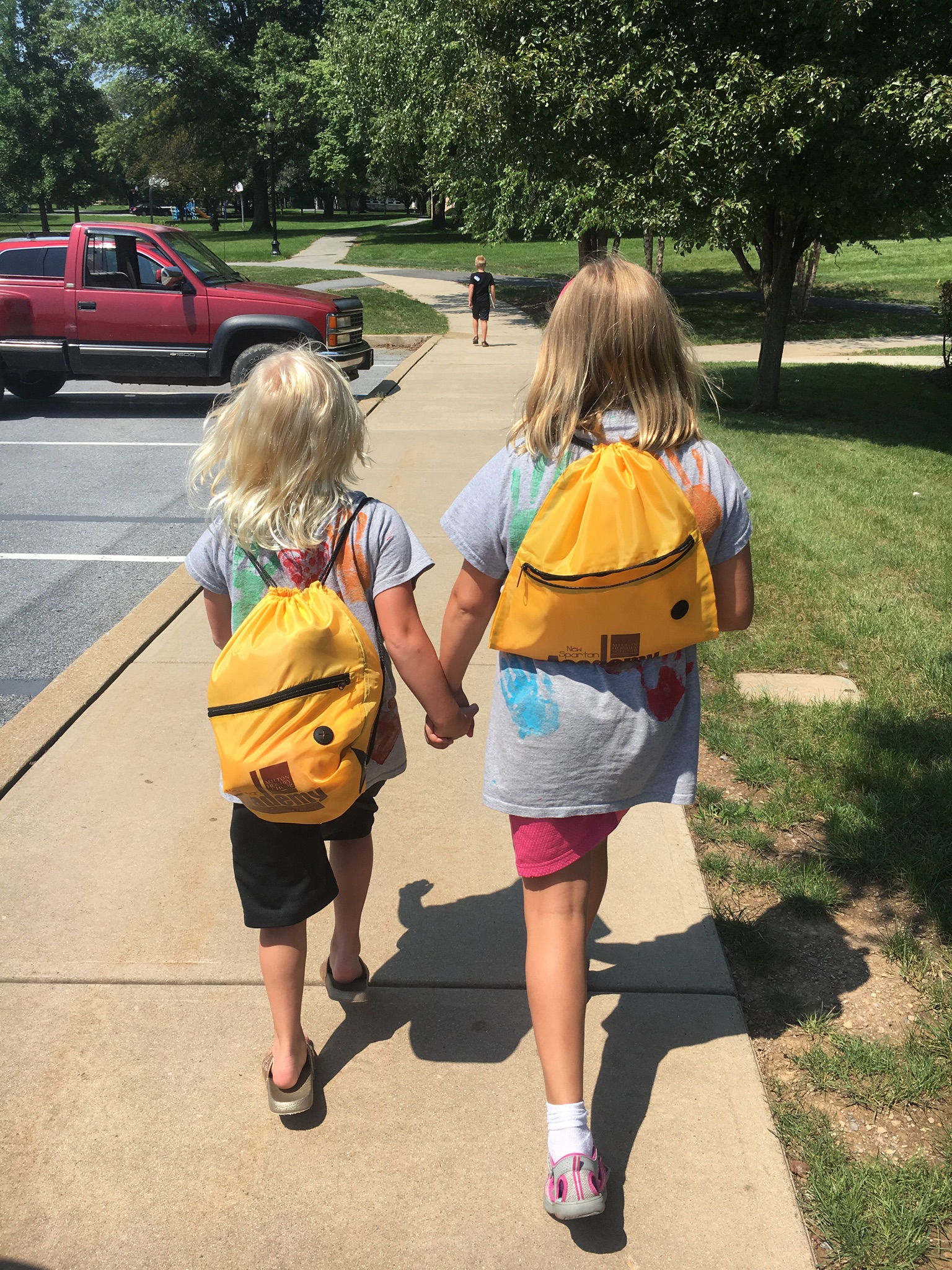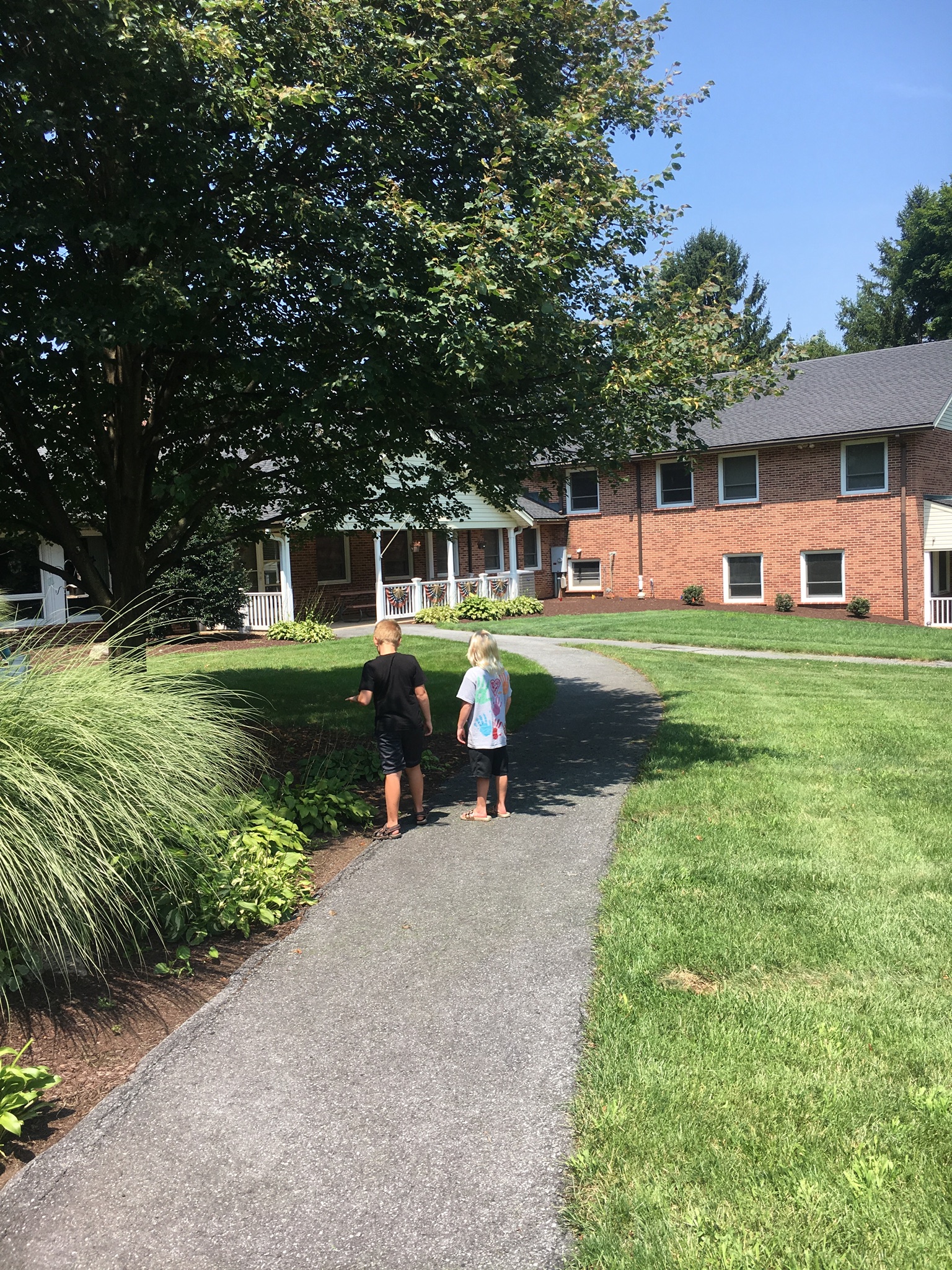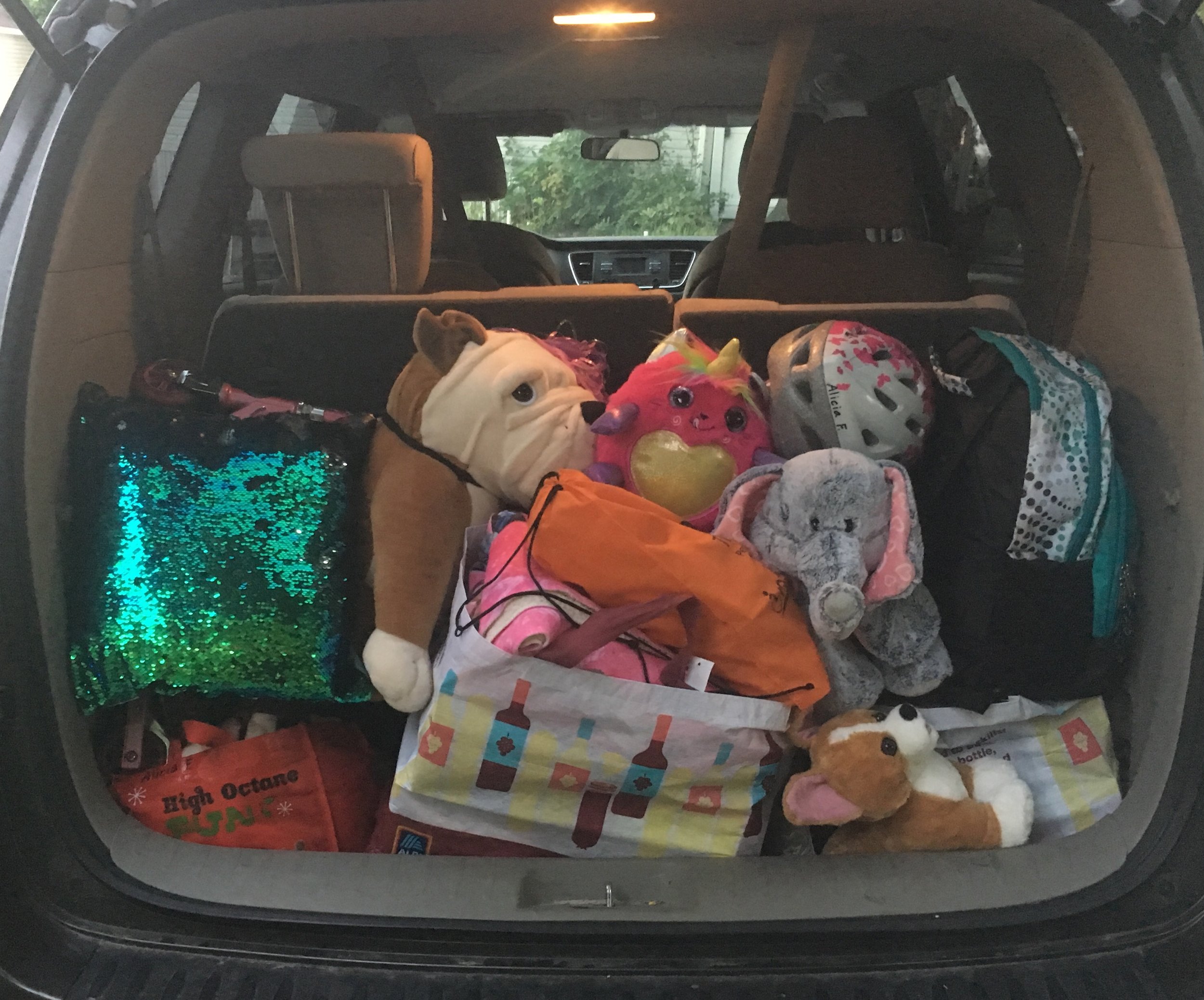What happens when it’s no longer safe for an autism family to stay together?
Moving into their new home, Milton Hershey School.
By EF
“Mom, what is this place? Can I live here?”
My ten-year-old daughter and I were driving through the Milton Hershey School on Route 322. I looked out the window and knew she was right. She needed a way out. With these honest and painful words, my daughter helped our autism family find a better way.
This is the story about why my husband and I decided to place our three typical children in a boarding school and keep our severely autistic, nonverbal son at home.
My purpose in sharing is not to seek pity, but to expose the heartbreakingly difficult decisions we autism families often must make. All autism families have a tolerance threshold. We all need to respect this threshold and support each other. There are no clear answers when it comes to dealing with aggressive autism. We do our best, make difficult decisions, and keep going.
“There are no clear answers when it comes to dealing with aggressive autism.
We do our best, make difficult decisions, and keep going.”
My husband and I have four children ages 6, 8, 10, and 12, and we live near Hershey, Pennsylvania. Our oldest, S, has severe, nonverbal autism and an intellectual disability. S is so much more than his diagnosis, and I've made this clear to him and to others. He loves riding rollercoasters, blowing out birthday candles, watching geese fly in formation, and the list goes on. His siblings are typical children who enjoy playing sports, going to parks, and spending time with friends.
Ninety-seven percent of the time, S doesn’t have aggressive behaviors. I know that my family is fortunate because we are raising a child with autism who is happy and content most of the time. But S is driven by impulses that are usually unknowable and irrational, therefore he needs 1:1 care 100% of the time.
You might ask if a family can be in crisis if the child’s behavior is violent only a percentage of the time. The answer is absolutely, yes. S’s siblings have had to learn how to move quickly, scream loudly, and get help. In a split second, S’s behaviors can change. He can go from sitting on the couch playing with a musical toy to chasing you down in attack mode. Noise, denied access, physical discomfort, changes in the environment, or other triggers can cause a crisis. I am ashamed to say that my children lived fearing for their safety in their own home. They screamed screeches no child should ever be in the position to scream. They endured hair pulls, scratches, hits, as well as having objects thrown at them. My children flinched and took cover when their brother moved too quickly or made a sudden, loud vocalization. They ran for cover under the kitchen table, hid in a bedroom, or darted out of the house.
We did our best
We always believed that we could help S learn how to control his behaviors. He has made tremendous progress over the years and has been having much fewer aggressive outbursts. His self-injurious behaviors and aggressive behaviors towards others began when he was a toddler. These are deeply ingrained, habitual behaviors. We sought early intervention help when S was two years old, and two years later, we enrolled him at a private school for children with moderate to severe autism. He received a laundry list of therapies and home and community support. He learned how to communicate using picture cards, and then, he moved on to using an app on his iPad. I flooded my home with hours of therapy and fully believed that, with professional help, I could help my child.
Even with a high level of skilled support, in January 2014, S’s aggressive behaviors toward his brother and sisters, as well as himself, were so extreme and frequent that our family decided we needed him in a hospitalization program. We went through the long process of waiting in a local ER for a bed to open somewhere in the state. Once we finally had our son placed, my husband and I immediately realized the plan wasn’t working. The staff would call us in the middle of the night asking how to calm him down. I would hear unfathomable screams and shrieks coming from S as he was causing self-injury. I could hear the pain, terror, and confusion in his cries. The staff didn't know how to manage his behaviors, I couldn't bring him home to hurt his siblings, and I couldn't live with myself as a mother knowing my child was suffering. S didn't understand why he was separated from his family. He was scared and far from home. We had very limited visitation hours, and the whole experience was horrible.
So, my husband and I decided to bring him home, determined to make life work. During this time, I had a vivid dream I was drowning. This is exactly how I felt during this dark season. My family needed help, and I was going under. We tried to keep the kids safe, but S would still get to them.
“I had a vivid dream I was drowning. This is exactly how I felt during this dark season.
My family needed help, and I was going under.”
We lived like this for four more years. Four more years. We had over 35 hours a week of professional help in our home, and we still couldn’t keep the kids safe. The guilt was overwhelming. I couldn’t get it right. How could I, an educator, who was able to connect with kids, not be able to help my own children? The screams of his younger siblings were branded in my mind. So we considered our options, wondering which one would be the least painful.
Desperately seeking a solution
A residential treatment facility would not have worked. S’s brief hospitalization was a disaster, S wouldn’t understand the new situation, it was distant from our home, and chances were insurance would deny or discontinue services. There was no stability.
What if we relinquished our legal rights to S and gave him up as a ward of the state? I am ashamed to say we even discussed this option, but when you are desperate and your options are so limited, you comb every square inch. S would have guaranteed funding to have his basic care needs met. Insurance wouldn’t be able to deny residential care funding. BUT how could we bring ourselves to legally give up custody? We love S and this was never going to be a real option. We just had to talk about it and take it off the table.
We turned our thoughts to having our family separate. A family similar to ours was profiled on Australian 60 Minutes last year. The father stayed with the son, Max, and the mother moved with the siblings into a separate home. We felt this type of arrangement, where my husband lived with S and I stayed with the other kids, could give S’s brother and sisters the safety and stability they needed. The two roadblocks were financial feasibility and the fact of marital separation. We could overcome neither.
So back to my drive with my daughter. The idea of enrolling our children at a boarding school was both heartbreaking and life-giving. The children needed and deserved to live in a safe environment. Milton Hershey School is a tuition-free boarding school that offers many academic, social, and athletic opportunities to its students. Houseparents and 8 to 12 students live in each of the 160+ homes within the campus neighborhoods. We toured the beautiful child-centered campus, spoke with staff, and witnessed how happy, loved, and well-cared for the students are. Our children needed a refuge from the storm, a place close to home, where we could pour out our love, and they wouldn’t feel abandoned. We prayed for them to be accepted — a hope didn’t come with joy, but with a sadness so tangible it made me feel nauseous for weeks.
The decision
Sadness, anger, and hope rained down on us as we soaked in the news: they were accepted and we were enrolling them. My youngest responded with, “Six-year-olds aren’t supposed to live away from their mommies.” My son, with tears in his eyes, blurted, “It’s okay to send me away instead of S, S wouldn’t understand.”
Van packed up on enrollment day.
How do you live without those daily hugs and kisses? How does a six-year-old adjust to having someone else reading her a bedtime story and taking care of her when she falls and scrapes her knee? How do you get used to driving by soccer fields where you used to watch practices and games? Separation was painful, but just like Max’s family, we were sticking with the plan. It was the only option.
Surprisingly, in some ways we are now more connected with our typical children because they aren’t living with the threat of violence 24/7. Survival mode is no longer ruling their lives. I don’t have to always be prepared to “save the day” and jump to their rescue.
S's siblings are transitioning well to life on campus. As his brother stated last week, "It is starting to feel more like home, and I like it." S receives therapy services during the week, and he is making progress. We can challenge and push him a bit more because we don’t have to worry about the other children’s safety. There are fewer triggers in his home environment now, so S is calmer and is having less frequent outbursts. For the first time, I feel my family is finally living life.
Autism families can face incredible hardship. There must be a balance between the daily reality, and what you can change. We had to act, and like other families, had to find the least awful choice.
EF is a mother, wife, and educator living in Pennsylvania. She is passionate about advocating for practical, life-changing help for children and families.



